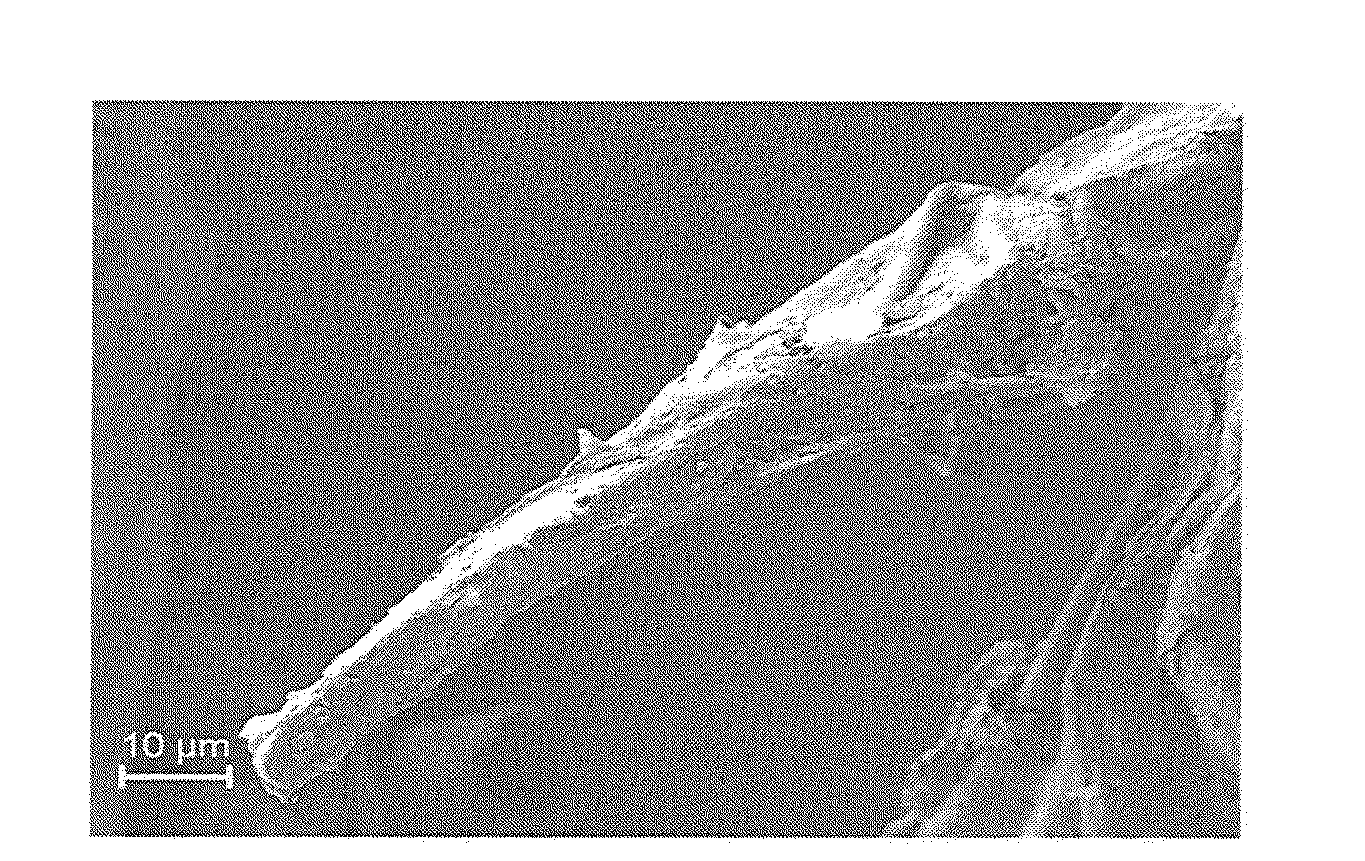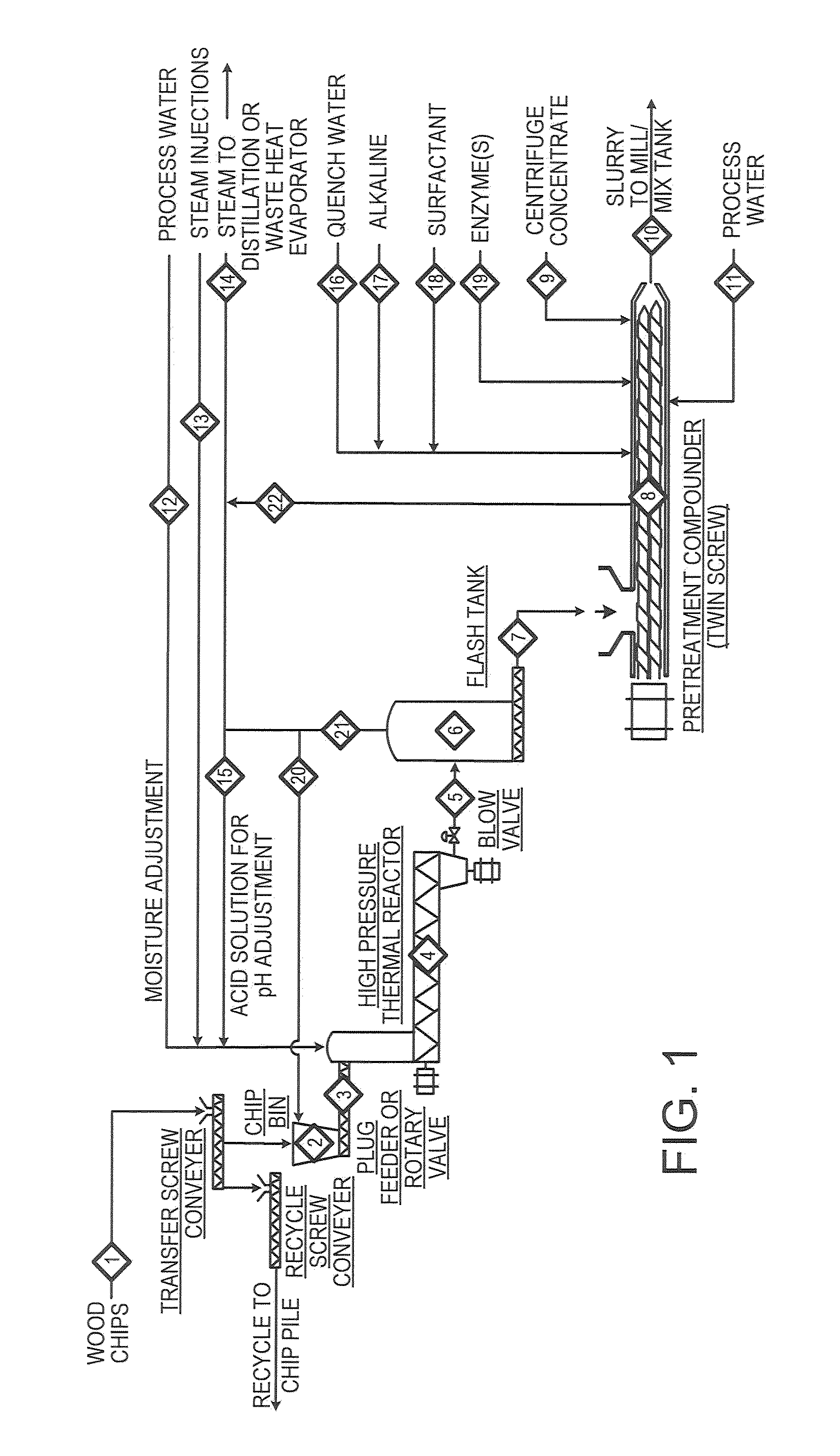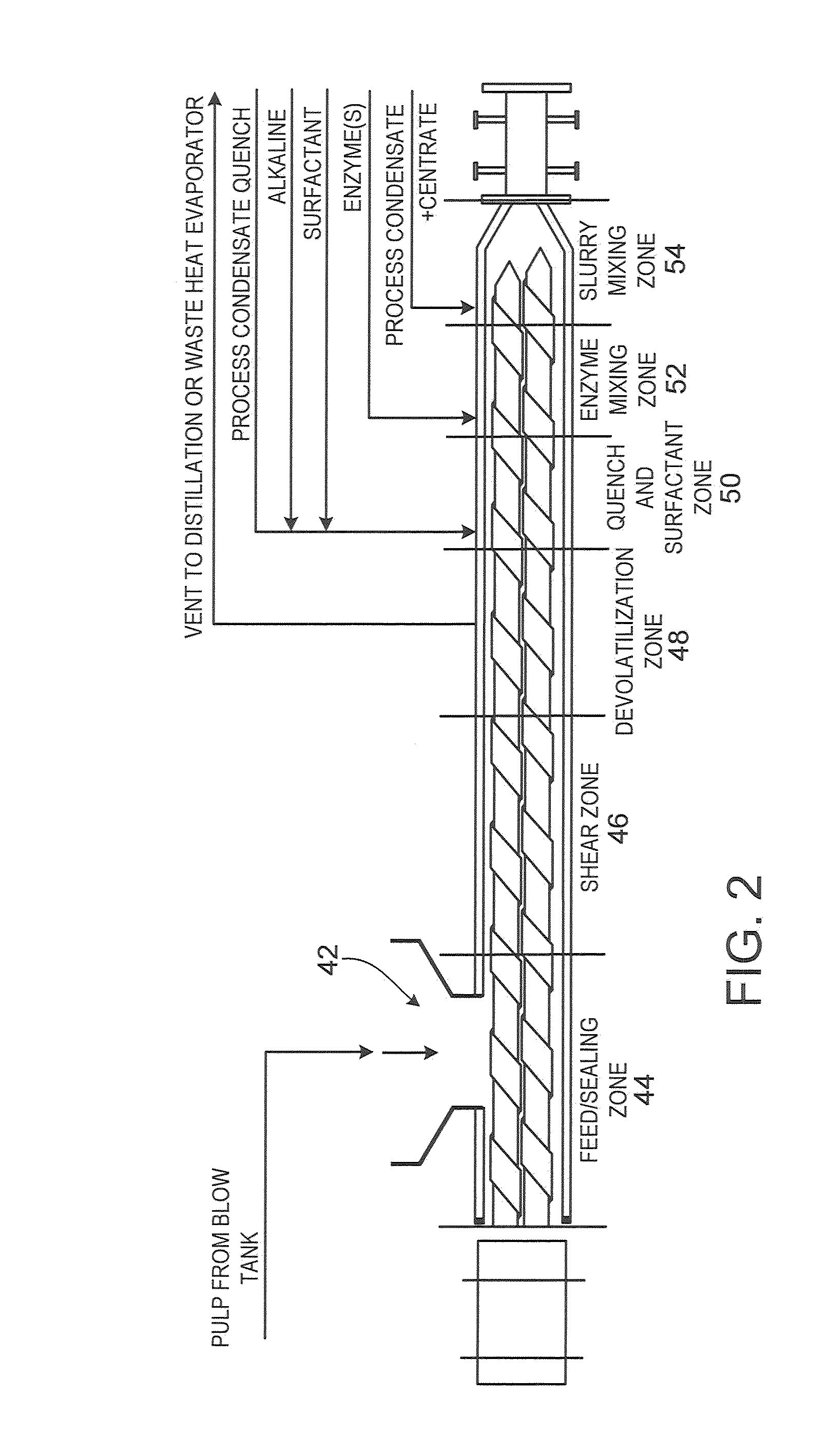Process for Thermal-Mechanical Pretreatment of Biomass
- Summary
- Abstract
- Description
- Claims
- Application Information
AI Technical Summary
Benefits of technology
Problems solved by technology
Method used
Image
Examples
example 1
Control Testing
[0063]Control Sample 1: Untreated sawdust was determined to have an average glucose recovery after enzymatic hydrolysis of 3.09% with a margin of error of plus or minus 0.38%. That is, 3.09% of the available glucose was recoverable from the untreated sawdust. No pretreatment was used for this control sample, other than coarse size reduction.
[0064]Control Sample 2: Untreated wood flour (pulverized sawdust) was determined to have an average recovery of 7.69% with a margin for error of plus or minus 0.15%. No pretreatment was used for this control sample, other than hammer milling used to grind the feedstock into a very fine wood flour.
[0065]The average glucose recovery in these control samples is very low, even when milling the material to a fine flour (median particle size=150 microns), which requires very high energy per unit mass biomass processed. In contrast, the process of the present invention can, with significantly less power than conventional milling, achieve ...
example 2
Thermal-Mechanical Pretreatment Testing
[0067]Lodgepole Pine: In this experiment, Lodgepole pine was processed through a hammer mill to reduce the particle size to less than 0.125 inches, after which the moisture content of the particles is adjusted to 60%. Using small reaction tubes and an experimental design (Step 2 in the testing protocol) to vary reaction severity (a combination of conditions, or combined severity factor, that includes thermal reactor residence time, temperature, and pH), a determination was made via statistical analysis as to which reaction severity result maximizes overall fermentable sugar yield. Combined severity factor, or CSF, is defined as: CSF=log 10 (residence time*exp[(temperature-100) / 14.75])−pH, where residence time is in minutes and temperature is in degrees Celsius. Next, the biomass was directed into a larger scale (22.5 liter) thermal pretreatment reactor at conditions defined as optimum by the experimental design described above (approximately 14...
example 3
[0070]Bagasse: A biomass feedstock of sugar cane bagasse was processed using the foregoing protocol, except that the feedstock was not subjected to initial milling The material exiting the compounder was collected and analyzed, and the results are shown in Table 2 below (ODM is defined as Oven Dry Matter):
TABLE 2BagasseDesign ParameterBagasseThermal pretreatment design targetsTemperature° C.180Residence timemin17.5AdditivesH2SO4Additive application ratemg / g ODM2Reactor discharge wt / wt70%moistureMechanical pretreatment design targetsCompounder speedrpm700Enzymatic hydrolysis targetsSlurry concentrationg ODM / g slurry 17%Hydrolysis timeHours72Temperature° C. 50pH5.3Surfactant typeNot applicableSurfactant dosagemg / g ODM0Enzyme typecelllulasesEnzyme protein dosagemg / g ODM4Hydrolysis yields achieved1)Glucan yield achieved% of theoretical 79%Xylan yield achieved% of theoretical81%Fermentation targetsSlurry concentrationg ODM / g slurry17%Fermentation timehours48Fermentation temp° C. 32Fermen...
PUM
| Property | Measurement | Unit |
|---|---|---|
| Temperature | aaaaa | aaaaa |
| Temperature | aaaaa | aaaaa |
| Temperature | aaaaa | aaaaa |
Abstract
Description
Claims
Application Information
 Login to View More
Login to View More - R&D
- Intellectual Property
- Life Sciences
- Materials
- Tech Scout
- Unparalleled Data Quality
- Higher Quality Content
- 60% Fewer Hallucinations
Browse by: Latest US Patents, China's latest patents, Technical Efficacy Thesaurus, Application Domain, Technology Topic, Popular Technical Reports.
© 2025 PatSnap. All rights reserved.Legal|Privacy policy|Modern Slavery Act Transparency Statement|Sitemap|About US| Contact US: help@patsnap.com



